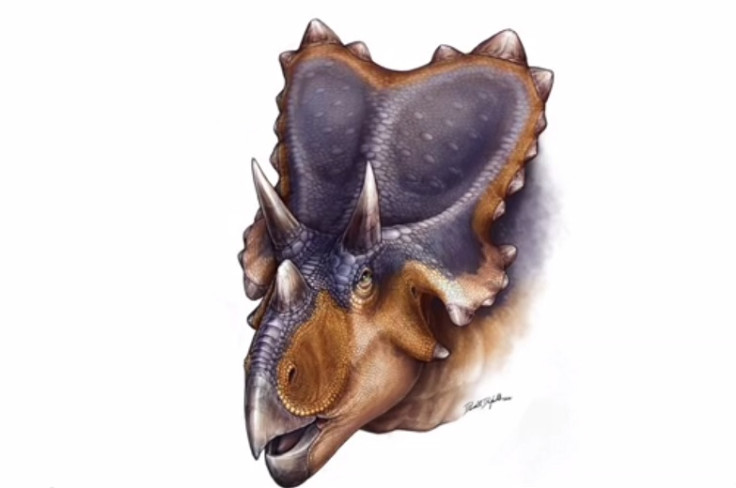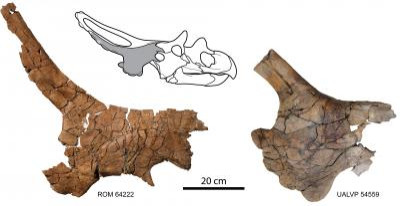77-Million-Year-Old Mercuriceratops Gemini Dinosaur with 'Winged Head' Found in US and Canada

A new species of dinosaur with unique wing-shaped headgear has been discovered, based on fossils collected from Montana, in the United States, and Alberta, in Canada.
Mercuriceratops gemini, meaning "Mercury-horned face" in reference to the wing-like ornamentation on its head which resembles the wings on the helmet of the Roman god Mercury, was approximately 20 feet long and weighed over two tonnes.
The name "gemini" refers to the almost identical twin specimens found in north central Montana and the UNESCO World Heritage Site, Dinosaur Provincial Park, in Alberta.
The plant-eating dinosaur lived around 77 million years ago during the Late Cretaceous Period. Mercuriceratops had a parrot-like beak and according to researchers, likely had two long brow horns above its eyes.
"Mercuriceratops took a unique evolutionary path that shaped the large frill on the back of its skull into protruding wings like the decorative fins on classic 1950s cars. It definitively would have stood out from the herd during the Late Cretaceous," said lead author Dr Michael Ryan, curator of vertebrate paleontology at the Cleveland Museum of Natural History.

"Horned dinosaurs in North America used their elaborate skull ornamentation to identify each other and to attract mates—not just for protection from predators. The wing-like protrusions on the sides of its frill may have offered male Mercuriceratops a competitive advantage in attracting mates."
Dr David Evans, curator of vertebrate palaeontology at the Royal Ontario Museum, added that the "butterfly-shaped frill" of Mercuriceratops has never been seen before.
The new dinosaur is described from skull fragments from two specimens collected from the Judith River Formation of Montana and the Dinosaur Park Formation of Alberta.
The Alberta specimen was collected by Susan Owen-Kagen, a preparator in Dr Philip Currie's lab at the University of Alberta.
"Susan showed me her specimen during one of my trips to Alberta," said Ryan. "When I saw it, I instantly recognised it as being from the same type of dinosaur that the Royal Ontario Museum had from Montana."
According to researchers, the Alberta specimen confirmed that the fossil from Montana was not a pathological specimen, nor had it been distorted during the process of fossilisation.
"This discovery of a previously unknown species in relatively well-studied rocks underscores that we still have many more new species of dinosaurs left to find," said co-author Dr Mark Loewen, as reported by Science World News.
The discovery is part of the Southern Alberta Dinosaur Project, which is designed provide an insight into Late Cretaceous dinosaurs and their evolution.
The research was published in the journal Naturwissenschaften.
© Copyright IBTimes 2025. All rights reserved.






















